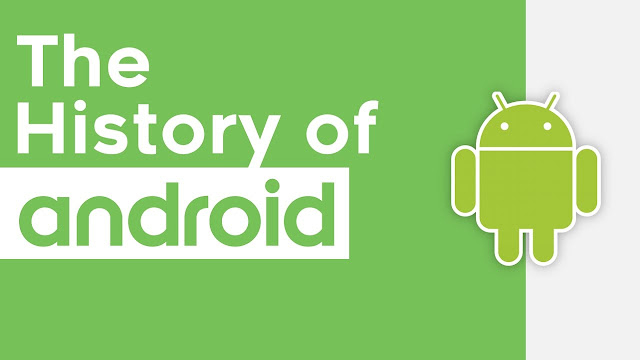In the fast-paced world of mobile development, it's easy to get caught up in the latest trends and technologies. However, it's essential for developers to remember and appreciate the rich history that paved the way for the current state of Android. By understanding the past, we can better appreciate the present and anticipate the future. Join us on a journey through Android's remarkable history, from its humble beginnings to the powerhouse platform it is today.
The Birth of Android (2003-2007):
Our story begins in 2003 when Andy Rubin, Rich Miner, Nick Sears, and Chris White founded Android Inc. The initial vision of the company was to develop an advanced operating system for digital cameras. However, as the mobile industry started gaining momentum, Android Inc. shifted its focus to smartphones. In 2005, Google acquired Android Inc., setting the stage for what was to come.
Android OS 1.0: The Cupcake Era (2008):
In September 2008, Google released the first version of the Android operating system, Android 1.0, which was aptly named "Cupcake." This release introduced essential features such as push notifications, widgets, and the Android Market (now known as Google Play Store). Developers could now create and distribute applications, marking a significant turning point for the platform.
Maturing with Donut, Eclair, and Froyo (2009-2010):
With subsequent updates like Donut, Eclair, and Froyo, Android expanded its feature set and improved overall performance. These versions introduced features such as voice-guided navigation, live wallpapers, support for multiple screen sizes, and enhanced performance through JIT (Just-In-Time) compilation. Android started to gain popularity among both users and developers alike.
The Gingerbread and Honeycomb Divide (2010-2011):
The release of Gingerbread (Android 2.3) in 2010 marked the platform's focus on refining user experience and optimizing performance. Gingerbread introduced features like NFC support and a refined user interface.
Simultaneously, Honeycomb (Android 3.0) was developed exclusively for tablets. It introduced a revamped interface optimized for larger screens. Although Honeycomb's adoption was limited, it laid the groundwork for future tablet-oriented releases.
Ice Cream Sandwich and Jelly Bean: A Unified Experience (2011-2013):
In 2011, Android 4.0, code-named Ice Cream Sandwich (ICS), aimed to provide a unified experience across smartphones and tablets. It brought a refreshed UI design, improved multitasking, and introduced Face Unlock.
Jelly Bean (Android 4.1-4.3) followed, focusing on performance improvements and introducing features like Google Now, expandable notifications, and Project Butter, which significantly enhanced the platform's responsiveness.
KitKat, Lollipop, and Material Design (2013-2014):
Android 4.4, known as KitKat, brought further optimizations, focusing on lower memory requirements, improved battery life, and a more immersive user experience. This release also introduced the Google Now launcher and enhanced voice search capabilities.
The subsequent release, Lollipop (Android 5.0-5.1), introduced the iconic Material Design language, offering a vibrant and visually appealing UI. Lollipop also introduced significant under-the-hood changes, including ART (Android Runtime) as the default runtime environment, improving app performance.
Marshmallow, Nougat, and Oreo: Refinements and Features (2015-2017):
Marshmallow (Android 6.0) introduced granular app permissions, Doze mode for improved battery life, and Google Now on Tap for contextual information. Nougat (Android 7.0-7.1) built upon these enhancements, introducing split-screen multitasking, direct reply notifications, and the Vulkan API for better graphics performance.
Oreo (Android 8.0-8.1) brought further refinements, including picture-in-picture mode, notification channels, and Project Treble, which aimed to streamline the Android update process.
Android P to R: AI Integration and Privacy Focus (2018-2021):
With Android 9.0 (Pie) and subsequent versions, Google focused on integrating AI capabilities into the platform. Features like Adaptive Battery, App Actions, and Digital Wellbeing aimed to enhance user experiences by leveraging machine learning.
Android 10 (Q) introduced a system-wide dark mode, enhanced privacy controls, and improved gesture navigation. Android 11 and 12 continued building upon these foundations, emphasizing privacy and providing better support for foldable devices.
Conclusion:
The history of Android is a testament to the remarkable journey of a platform that started as a vision and grew into a global powerhouse. From humble beginnings to a dominant force in the mobile industry, Android has continually evolved, pushing technological boundaries and enabling developers to create innovative applications.
As developers, we must never forget the lessons of the past. By understanding Android's history, we gain valuable insights into the platform's evolution, which can inform our decisions and shape the future of mobile development. Let's appreciate the achievements, learn from the challenges, and continue pushing the boundaries of what Android can do.



No comments:
Post a Comment